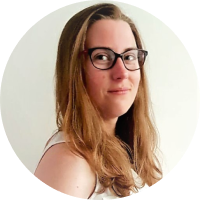How to introduce yourself with confidence in another language?
A first meeting with someone is always nerve-wracking. For all that’s been said about first impressions, we still know that they’re key, and difficult to change after the fact.
So when you’re about to introduce yourself in another language, it adds a challenge: most people are not as confident in another language, so you might start a job interview or negotiation with a potential new client at a disadvantage as the other person has the wrong impression of you. You also want to avoid making mistakes because it might make you sound less professional, or worse, it might lead to misunderstandings.
Here are some tips to leave a strong impression behind, even in a language you are not fully fluent in.
1. Prepare, practice
This one is obvious, but it bears repeating. Prepare how you will introduce yourself: be concise, tell an interesting story in few sentences. Practice in front of a mirror, in front of colleagues, just like you would preparing an important pitch or introduction in your own language.
Don’t translate your pitch literally from your own language to the target language, but instead look up some examples, perhaps a few videos, and analyze the language they use. See if there is anything you can copy or take inspiration from.
Record yourself during your practice rounds to listen to your own accent and pronunciation, and use an online dictionary to check for pronunciation if you’re in doubt.
2. Be upfront
Before you start the formal introductions, be honest about the fact that you’re a learner. Don’t dismiss or minimize your skills by saying something like “I’m sorry for my mistakes” because mistakes are not something anyone has to apologize for. Simply state “I am still learning X. Please let me know if something isn’t clear” or something along those lines. Something that lets the other person know that they can always ask for clarification or for you to repeat something, and it will also avoid misunderstandings.
Be upfront and honest, but remain confident in your ability.
3. Embrace mistakes and correct them with confidence
If someone does correct a mistake you make, instead of apologizing before correcting the mistake, thank them for the correction. It shows that you welcome feedback and are open to learning.
Also change how you correct yourself (if you choose to do so, more on that later). People often say “sorry” immediately before correcting themselves but have you ever heard a newsreader correct themselves on live television in that way when they misspeak, and if they did, how did that come across? Instead, simply correct yourself immediately, and say “rather” after the correction to indicate that that is what you meant. For example: “I have saw … I have seen, rather,” and you continue.
4. Remember that it’s about the message
Ultimately, the goal isn’t to speak perfectly. Not even native speakers speak perfectly. Ignore any mistakes that you make while speaking that don’t hinder the communication and that you don’t feel too embarrassed by.
Speaking fluently and moving the conversation along is much more valuable, and the more you speak, the more you will feel at ease. Interruptions to correct mistakes will break the flow of the conversation and shift the focus from the message to the language.
If your message is understood, no matter how many mistakes you made, then the goal was achieved.
Are you looking for professional help?
Are your language skills an obstacle to be able to introduce yourself spontaneously? Then you can consult a language coach at Squidll. Together you can prepare your presentation, broaden your vocabulary, practise your text until you are confident enough to introduce yourself with confidence.
Sign up on Squidll, find a business language coach who fits your needs and start today on Squidll.



